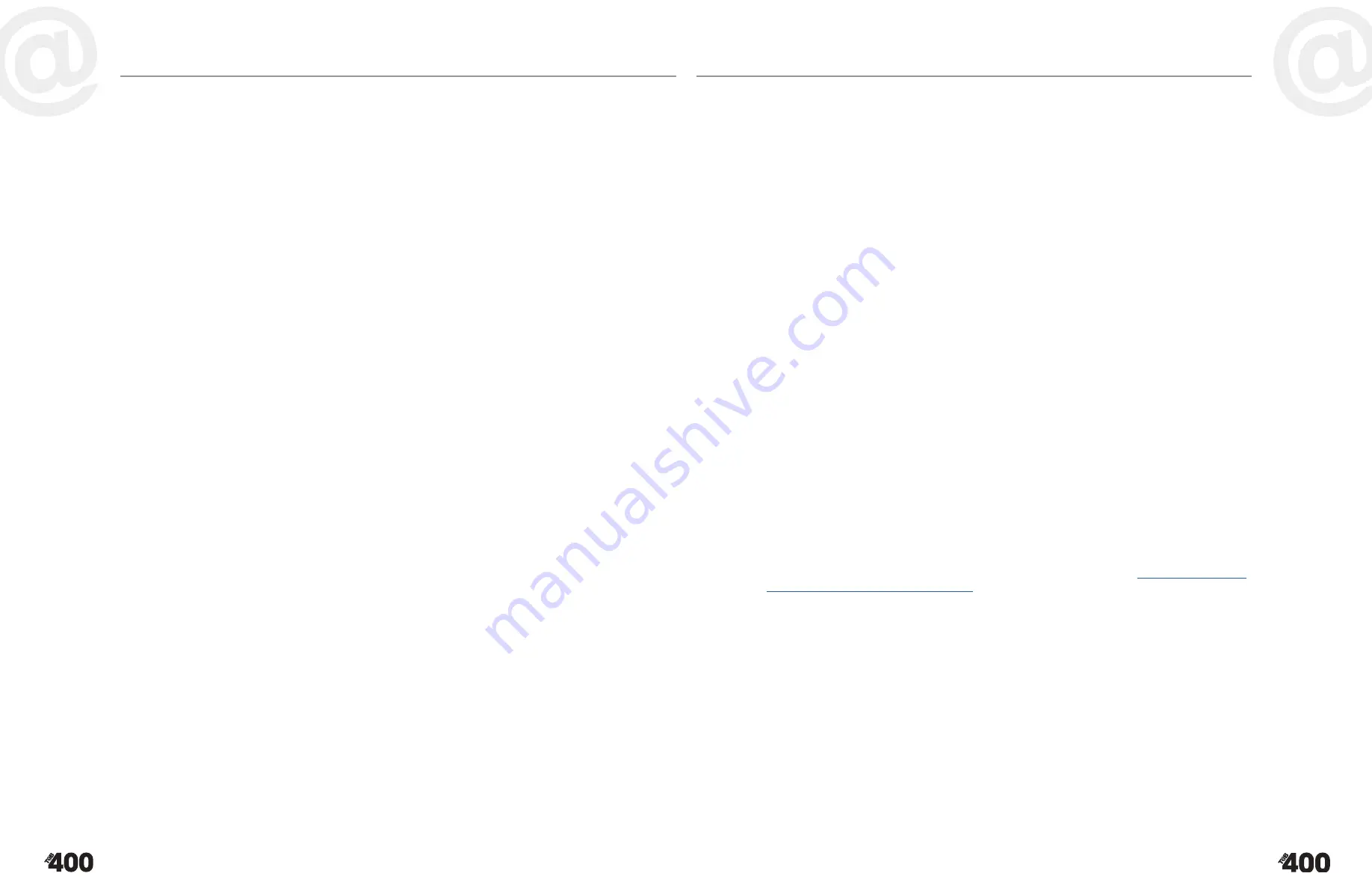
Teardrop Campers • nucamprv.com
50
Teardrop Campers • nucamprv.com
51
To keep condensation to a minimum:
• Monitor the humidity in the camper with a hygrometer device.
• Keep relative humidity to 60% or less in warm weather and 35% or less in cold weather.
• Ventilate the camper when cooking, cleaning or sleeping using the range hood exhaust fan and
installed ceiling vents.
• Turn on exhaust fans when showering or using a hair dryer.
• Hang wet clothes or towels outside to dry.
• Promote air circulation inside the camper with a portable fan.
• Avoid closing cabinets when they are full of stored goods unless the camper is in transit.
• In warm weather start the air conditioner earlier in the day.
• In cold weather, ventilate the cabin to keep humid air moving out.
• Use a dehumidifier to control humidity.
Using a dehumidifier and hygrometer device is the easiest control method to combat condensation.
Small dehumidifiers and hygrometers can be purchased at electronics or building supply stores for a
fraction of the cost of repairing condensational damage. Place your dehumidifier in a high air flow area
rather than in a closet or enclosed space. Ideally, purchase a dehumidifier that can be continuously
emptied into an appropriate drain or to the outside. This will allow you to run it continuously and not
have to empty the bucket all the time. Otherwise you will have to empty the bucket frequently. Please
do not use condensed water from the dehumidifier for sanitation or drinking purposes.
During cool, rainy weather, your camper will be more susceptible to condensation due to the higher
water saturation in the air. At night, outside air temperature decreases which, in turn, increases
humidity and allows condensation to form easier. It is important to ventilate the cabin while sleeping
to remove humidity.
MOLD
Mold can grow on virtually any substance. It can have health effects such as allergic reactions, asthma,
nasal congestion, coughing, wheezing and other irritations. While there is no way to fully eliminate
mold growth there are some measures that can be taken to keep mold and mildew under control in
your camper:
• Keep condensation and water vapor to a minimum.
• Ventilate the camper with the installed fans.
• Repair water leaks and liquid spills right away and dry excess moisture.
• Use the air conditioner, dehumidifiers and a hygrometer to control humidity.
• Use exhaust fans when showering, cooking, washing, or cleaning.
• Clean the camper on a regular basis.
• The kitchen and bathroom are where most water is used. Keep them clean and dry.
• On surfaces where it is safe, use cleaning products that kill mold and mildew.
• Teach all occupants how to recognize signs of mold.
If you suspect mold is present, have your camper tested by a professional. In the cases where you
believe mold may have just started to form, kill it with a water/bleach or detergent solution. The water/
bleach ratio is one-gallon water to one cup (or less) of household bleach.
Never mix cleaners together
such as ammonia and bleach.
This is dangerous! Be sure to wear gloves and a mask to protect from
irritants in the mold. Safely dispose of the rags and gloves. Ventilate or dry the area with a portable fan
to remove all moisture.
OUTGASSING
Like most of the RV industry, nuCamp uses innovative products to develop camper product lines
to serve the desires and needs of their customers. Carpet, linoleum, insulation, particle board,
composites, plywood and upholstery are some common products that are used in the construction of
most campers. These innovative products may outgas (or offgas) various chemicals and formaldehyde
that were dissolved, trapped or absorbed in the materials. You may notice a chemical odor in high
temperatures and humidity levels or when you have newly purchased your camper. Outgassing is not a
defect or considered abnormal. Outgassing decreases over time.
CHEMICAL SENSITIVITY
Outgassing may arouse chemical sensitivity with various symptoms such as eye, nose or throat irritation,
nausea, headache, allergies, coughing or wheezing. Elderly folks, children, and those with previous lung
problems are more susceptible to outgassing effects. To reduce the effects of outgassing, ventilate and
promote continuous airflow throughout the camper.
FORMALDEHYDE
Most chemical outgassing concerns involve formaldehyde. This colorless, strong-smelling gas is used
in many building products such as pressed wood, particle board, fiberboard, paneling, plywoods
and various other products. Formaldehyde is a naturally occurring substance that is present at low
levels even in normal fresh air. Low levels of formaldehyde are also released from smoking, cooking
and household products, including paints, cleaning agents and cosmetics. nuCamp campers contain
composite wood products that follow the California Air Resource Board (CARB) formaldehyde emission
standards as outlined by California Code of Regulations § 93120.2(a) Phase 2 (P2).
Reactions to formaldehyde vary. Most people are unaffected but a select few are quite sensitive and
may have one or more of these symptoms:
•
Watery
eyes
•
Skin
irritation
• Burning sensations–eyes/nose/throat
• Nausea
• Coughing
• In extreme cases, cancer
• Wheezing
To reduce the chances of formaldehyde presence, ventilate and promote continuous airflow throughout
the camper. More information on formaldehyde can be found at this link:
https://www.epa.gov/
formaldehyde/facts-about-formaldehyde
.
PETS
Many happy campers love to take their beloved pets with them on excursions. The presence of a
pet may affect the air quality in your camper, dependent upon its size, breed and type. Pets may
release pet dander, hair, and allergens from saliva, urine and feces. Pet dander is the normal culprit for
triggering reactions in those who have known pet allergies and occurs mostly from furred or feathered
pets. Because of the smaller amount of air space in campers, air quality is affected more than in a
normal house. You can limit the impact and presence of pet dander by observing the following:
• Brush furred pets daily, followed by vacuuming the area where you brushed.
• Bathe your pet regularly.
• Vacuum frequently. A vacuum with various attachments will help you reach those tight corners.
• Clean hard surfaces with microfiber cloths.
• If pets are allowed on furniture, clean it frequently.
• Have your pet sleep in a separate area on its own bed.
• Employ the use of an air purifier.
• Have your pet routinely checked by a licensed veterinarian to ensure good health.










































